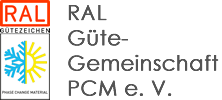NEW PRODUCTS
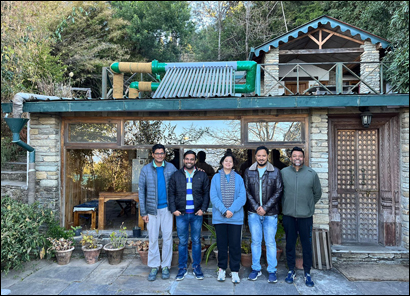
Pluss installs solar-thermal space heater in mountain retreat
Pluss Advanced Technologies has installed a prototype of its solar-powered space-heating system in a remote tourist retreat in northern India.
The Aagun Spatial system uses heat received from a rooftop solar collector. During the day, a 60-watt fan directs the warm air to heat the room as needed and charge the PCM-based storage unit. At night, the stored energy in the PCM heats up the room.
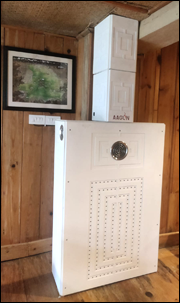
The Binsar Forest Retreat describes itself as “an eco-friendly homestay” in the Binsar Wildlife Sanctuary in the eastern part of the Himalayan state of Uttarakhand. At an altitude of 7,600 feet, the retreat boasts “spectacular views of the higher Himalayas and the Kumaoni hills.” It runs on solar power.
Pluss Vice President Vishnu Sasidharan said the company decided to test the prototype in Uttarakhand because the region is popular with tourists and does not have reliable grid support. Due to the instability of grid electricity, homes and commercial establishments rely on traditional wood burners and gas burners to heat spaces. The objective is to offer a renewable energy based solution that can reduce heating-related emissions in northern India by 90 percent.
The Aagun system uses a PCM capable of maintaining +20 degrees C and has a storage capacity upward of 7 kw-hr. The PCM is encapsulated in specially designed panels that form an integral part of the heat exchanger inside the indoor heating unit. Sasidharan listed the system benefits as:
• Operational during non-sun hours
• Low operational or running cost
• Space-efficient
• Environment-friendly
Pluss has been collecting performance data at the site and at a test bed. The company plans to commercialize the system once the results have been validated.
IN BRIEF
• Researchers at the U.S. Department of Energy’s Lawrence Berkeley National Laboratory have developed a refrigeration device that cools stuff in a way that’s entirely different from conventional refrigeration. The “ionocaloric” device uses an electrical charge to change a material from solid to liquid, causing the material to absorb heat from the surroundings. The material crystalizes into a solid, releasing heat, when the process is reversed. ZME Science writes: “[The researchers] performed experiments using a salt made of iodine and sodium to melt ethylene carbonate crystals, an organic solvent routinely used in Li-ion batteries. Using just a single volt of charge, the system [achieved a] temperature difference of a whopping 25 degrees Celsius (45 degrees Fahrenheit).”
• Tessol of India announced that it has reached a milestone of delivering more than 1 billion products through its cold chain solutions. Tessol, now in its ninth year of operations, offers temperature-control solutions for the pharma, agricultural and refrigerated and frozen foods sectors. The company says it is part of food delivery for 5 out of 10 food manufacturers in India.
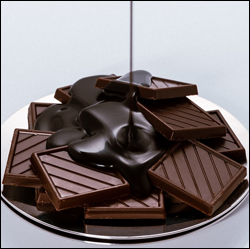
• What makes chocolate so irresistible? A key component is how it feels as it melts in the mouth. Researchers at the University of Leeds analyzed the role of fat in the melting process, using a luxury brand of chocolate and an artificial tongue. They concluded: “It is the location of the fat in the make-up of the chocolate that matters in each stage of lubrication, and that has been rarely researched. We are showing that the fat layer needs to be on the outer layer of the chocolate, this matters the most, followed by effective coating of the cocoa particles by fat, these help to make chocolate feel so good.” The researchers hope the findings “will lead to the development of a new generation of luxury chocolates that will have the same feel and texture but will be more healthful to eat,” the Jerusalem Post reports. The study, “Insights into the multiscale lubrication mechanism of edible phase change materials,” was published in the journal ACS Applied Materials and Interface.
• Brenmiller Energy of Israel was named Visionary StartUp of the Year in Energy Distinction at the World CleanTech Awards in Abu Dhabi this month. Brenmiller’s bGen system enables the use of renewable energy and waste heat to heat crushed rocks to very high temperatures.
• 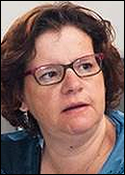
Luisa Cabeza, right, full professor and researcher at the University of Lleida, Spain, became editor-in-chief of Elsevier’s Journal of Energy Storage on Jan. 1. “I encourage you to send your manuscripts to the journal!!” she said in a LinkedIn post announcing her new role.
• Rubitherm Technologies has posted an animation on LinkedIn showing how the company’s CSM panels can be arranged for a stand-alone ventilation system. “Due to the special properties of the #CSM panels and the #PCM,” the company says, “the cold air from the night is absorbed by itself and released again during the day. It does not require extra electricity to cool the air.”
• The complete agenda has been posted for Enerstock Online 2023, set for Feb. 14-15. The free conference will focus on research and policy developments in energy storage. The Day 1 lineup includes Nidhi Agrawal of Pluss Advanced Technologies and Mary Ann White of Dalhousie University. The Day 2 lineup includes Norma Kemper of GP Joule and Martin Schichtel of Kraftblock.
• Canary Media’s Julian Spector has put together a list of “5 reasons why thermal storage may finally be set to take off.” Reason No. 2: Thermal storage systems are getting smaller and easier to install. Calmac, Viking Cold Solutions and Nostromo Energy are among the companies mentioned.
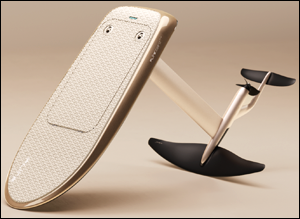 • A battery-powered hydrofoil designed in Australia and manufactured in Netherlands uses phase change material to keep the lithium-ion battery from overheating. Fliteboard Pty Ltd.’s eFoil is essentially a powered surfboard. Riders use a handheld control to manage speed. Fliteboards can race across the water at up to 50 km/h and have a range of up to 40 kilometers. All that fun doesn’t come cheap. The base model retails for about $10,000 USD.
• A battery-powered hydrofoil designed in Australia and manufactured in Netherlands uses phase change material to keep the lithium-ion battery from overheating. Fliteboard Pty Ltd.’s eFoil is essentially a powered surfboard. Riders use a handheld control to manage speed. Fliteboards can race across the water at up to 50 km/h and have a range of up to 40 kilometers. All that fun doesn’t come cheap. The base model retails for about $10,000 USD.
• The Global Energy Interconnection Research Institute Europe in Berlin has an opening for a thermal energy storage research engineer.
• The energy conversion and systems group at Aalto University‘s School of Engineering in Helsinki, Finland, is looking for a Ph.D. candidate to work on development of novel sorption based thermal energy storage materials. The position primarily involves research with the goal of a doctoral degree.
PATENTS
Ear tip and related devices
U.S. patent application 20230011476 (applicant Bose Corp., Framingham, Massachusetts):
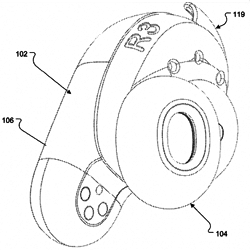
“An ear tip includes a body configured to be mounted onto an earbud. The body includes a first end, a second end opposite the first end, and an inner wall extending between the first and second ends. The inner wall defines and surrounds a hollow passage that is configured to conduct sound waves. The body also includes an outer wall that is connected to the inner wall at the first end and extends away from the inner wall toward the second end. … [The inner wall] comprises an extension that extends between the nozzle and the first end of the ear tip, and wherein the outer wall and the extension are formed at least partially of a viscoelastic material with frequency stiffening behavior. … [The] viscoelastic material comprises a composition including an elastomer and one or more phase change materials having a phase change ability from solid to liquid state at a predetermined phase-change temperature.
”
PCM panel and passive thermally controlled shipping container
U.S. patent application 20230017903 (applicant Pelican BioThermal LLC, Plymouth, Minnesota):
“A phase change thermal storage unit having has at least one conformational feature selected from (i) a fill port located proximate a corner of the of the panel, (ii) internal contouring that alters the thickness of the phase change material retention chamber for creating an average thickness of the chamber within a central portion of the chamber which is less than the average thickness of the chamber within a peripheral portion of the chamber, and (iii) fingertip indentation handles proximate each and every edge.”
Container for storing and serving scoopable frozen confectionery
U.S. patent application 20220411065 (applicant Unilever, Englewood Cliffs, N.J.):
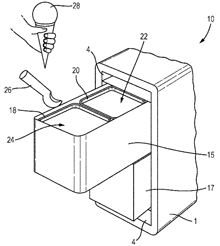
“A thermally insulated container for storing a scoopable frozen confectionery and serving a scoop thereof to a consumer, and suitable for mounting within a service cart, the container comprising: a thermally insulated housing having at least one openable portion to allow access to an enclosed insulated chamber; a product storage assembly mounted within the enclosed insulated chamber and defining an internal product storage chamber that is accessible via the openable portion of the thermally insulated housing, the outer surface of the product storage assembly being substantially parallel to but spaced away from substantially all of the inner surface of the thermally insulated housing, the average spacing being from 1 to 10 mm; at least one reservoir of phase change material located in the enclosed insulated chamber.”
More U.S. patent applications:
Internal combustion engine cooled by a PCM (FPT Industrial S.P.A., Turin, Italy) | System for energy consumption reduction and cost savings in a building (Stasis Energy Group, Pomona, Calif.) | Devices, systems and methods for thermally regulating and dispensing beverages (Vesture LLC, Charlotte, N.C.) | Method and apparatus for heat storage (Graphite Energy Pty. Ltd., Surry Hills, Australia) | Method for enhancing thermal energy storage performance of industrial grade hydrated salts (Qinghai Institute of Salt Lakes, Chinese Academy of Sciences, Xining City, China) | Passive temperature controlled container (Inmark Global Holdings LLC, Austell, Georgia) | Protective dressing with reusable phase-change material cooling insert (Hill-Rom Services Inc., Batesville, Indiana)
RESEARCH ROUNDUP
From Journal of Energy Storage:
• Progress in application of phase-change materials to cooling clothing
• Evaluation of the impact of different composite phase change materials on reduction in temperature and enhancement of solar panel efficiency
• Optimized thermal envelope of low-income dwellings in Santiago de Chile incorporating Pinus radiata wood impregnated with phase change materials
From Case Studies in Thermal Engineering:
• Performance enhancement of PV panels using phase change material (PCM): An experimental implementation
• Effects of microencapsulated phase change material on indoor thermal comfort and energy consumption
From Desalination:
From Polymer Testing:
From Applied Thermal Engineering:
• Discharge performance of a high temperature phase change material with low-cost wire mesh
• Integration of lauric acid/zeolite/graphite as shape stabilized composite phase change material in gypsum for enhanced thermal energy storage in buildings
From International Journal of Environmental Research and Public Health:
From Energies:
From Energy Reports:
• Demand response with active phase change material based thermal energy storage in buildings
From Solar Energy:
• A timeline of the phase-change problem for latent thermal energy storage systems: A review of theoretical approaches from the 1970′s to 2022
• Performance of natural wax as phase change material for intermittent solar energy storage in agricultural drying: An experimental study
From Waste Management:
From Materials for Clean Energy Production and Storage:
From International Conference on Electrical, Computer, Communications and Mechatronics Engineering:
• Innovative Technologies for Efficient Power Supply Using Solar Systems and Phase-Change Materials
From Diamond and Related Materials:
• Stearic acid/boron nitride as a composite phase change material for thermal energy storage
From Advances in Civil Engineering Materials:
• The Composite of MPCM and Building Materials and Its Application in Building Walls: A Review
From Sustainable Energy Technologies and Assessments:
From Journal of Building Engineering:
NETWORKING
Connect with PCM experts and industry leaders on LinkedIn
 More than 1,750 people have joined a LinkedIn group devoted to the discussion of phase change material and thermal energy storage. You are invited to join the Phase Change Matters group and connect with PCM and TES experts from around the world.
More than 1,750 people have joined a LinkedIn group devoted to the discussion of phase change material and thermal energy storage. You are invited to join the Phase Change Matters group and connect with PCM and TES experts from around the world.
This month we welcome Sol Carolina Costa Pereira, assistant professor at Northumbria University, Newcastle upon Tyne, United Kingdom; Steve Barberi, founder at AGT-USA, Corona, Calif.; V Vinayaka Ram, associate professor of civil engineering at BITS Pilani, Hyderabad, India; Rajesh Kumar, Ph.D. scholar at Indian Institute of Technology, Patna, India; Olivier van Wilsem, machine operator at Van Velsen Reflectielijnen, Capelle aan den IJssel, Netherlands; and Adina Cirtog, principal consultant for carbon and energy at Pangolin Associates Pty. Ltd., Adelaide, Australia.
NEWS TIPS
Does your company, agency or university have a job opening, new research, new product or other news you’d like to share? I would love to hear from you. Please contact newsletter editor Ben Welter at benedict.welter@gmail.com.
A WORD FROM OUR SPONSOR
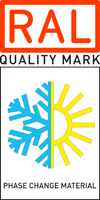 This newsletter is made possible through the generous support of the RAL Quality Association PCM and the members listed below. To learn more about the association, including membership benefits, please contact Stefan Thomann, executive director, at pcm@kellencompany.com.
This newsletter is made possible through the generous support of the RAL Quality Association PCM and the members listed below. To learn more about the association, including membership benefits, please contact Stefan Thomann, executive director, at pcm@kellencompany.com.
Axiotherm GmbH | Croda International Plc. | ISU Chemical Co. Ltd. | RuhrTech | Microtek Laboratories | PCM Technology | PLUSS Advanced Technologies | PureTemp LLC | Rubitherm Technologies GmbH | Sasol Germany GmbH | S.Lab Asia Inc. | Sunamp Ltd. | va-Q-tec AG
